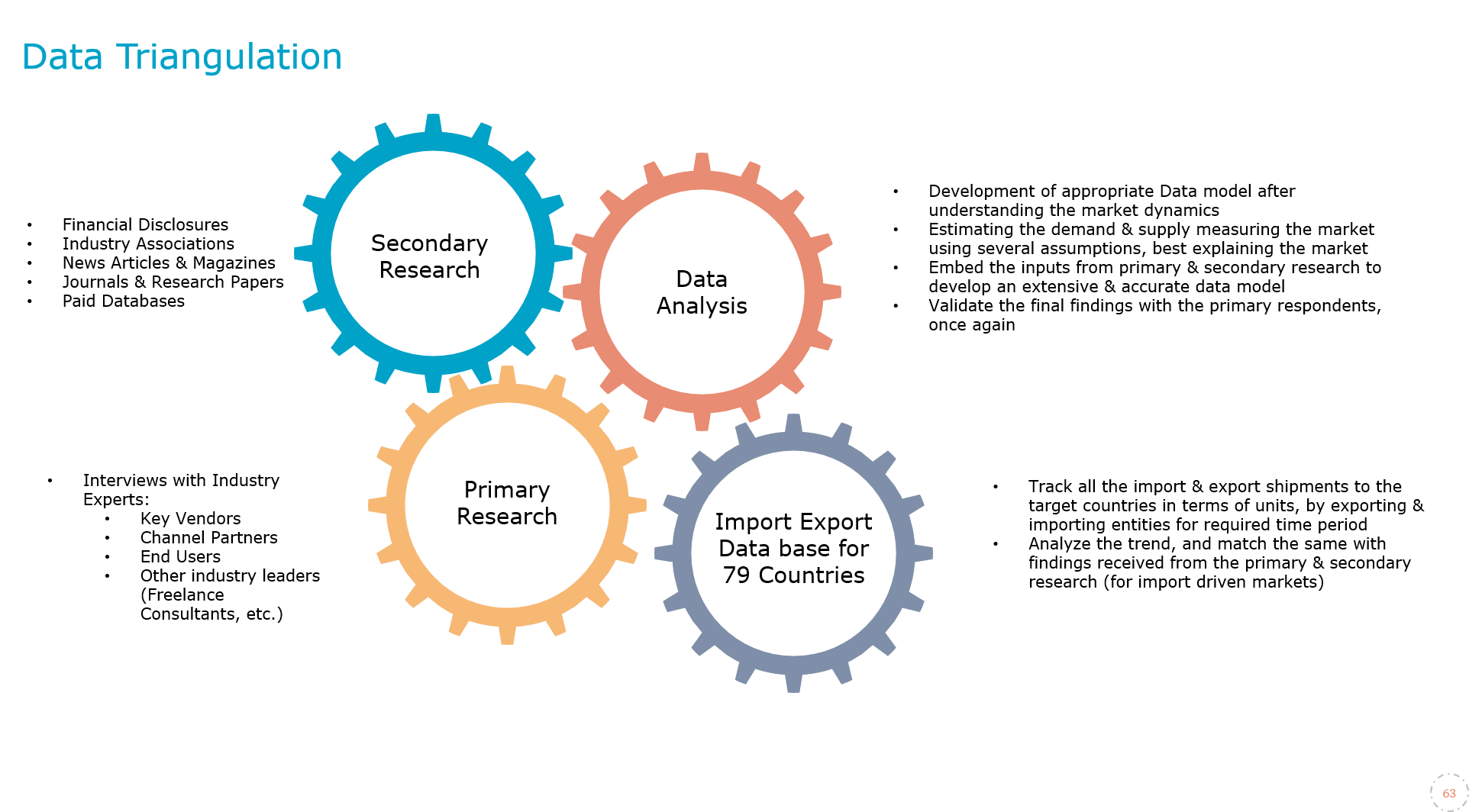
Egypt Healthcare Market Research Report: Forecast (2025-2030)
Egypt Healthcare Market Analysis - By Type of Hospitals (Government, Non-Government), By Specialization (General Hospitals, Specialized Hospitals), By Disease Type (Diabetes, Cance...r, Cardiovascular, Neurological, Respiratory, Bone & Skeletal, Eyes Nose Throat (ENT), Others), and Others Read more
- Healthcare
- May 2025
- Pages 112
- Report Format: PDF, Excel, PPT
Market Definition
Secondary care facilities are hospitals where doctors refer patients to specialists after performing a basic examination. A doctor who specializes in the field of medicine then examines the patient. Allergists, infectious disease specialists, ophthalmologists, endocrinologists, gastroenterologists, nephrologists, neurologists, urologists, psychiatrists, and others are examples of secondary care specialists.
Market Insights & Analysis: Egypt Healthcare Market (2025-30):
The Egypt Healthcare Market size was valued at around USD 1.45 billion in 2024 and is projected to reach USD 2.72 billion by 2030. Along with this, the market is estimated to grow at a CAGR of around 11.05% during the forecast period, i.e., 2025-30. The enormous presence of public & private healthcare facilities, such as specialty hospitals, clinics, etc., widely supported the revenue growth of the Egypt Healthcare Market during the historical years. The country has gained a strong reputation within the Middle East & Africa region, owing to the availability of skilled healthcare professionals & infrastructure at a competitive cost, along with easier visa access compared to other regional competitors. This has notably helped the country earn a strong reputation as a medical tourism hub of the region.
| Report Coverage | Details |
|---|---|
| Historical Years | 2020–23 |
| Forecast Years | 2025–30 |
| Market Value in 2024 | USD 1.45 Billion |
| Market Value by 2030 | USD 2.72 Billion |
| CAGR (2025–30) | 11.05% |
| Top Key Players | Cleopatra Hospital Group, Saudi German Hospital, As-Salam International Hospital, Katameya Clinic Hospital (KCH), EL Nozha International Hospital (NIH), Wadi ElNeel Hospital, Arab Contractors Medical Center, Ganzouri Specialized Hospital, and others |
| Segmentation | By Type of Hospitals (Government, Non-Government), By Specialization (General Hospitals, Specialized Hospitals), By Disease Type (Diabetes, Cancer, Cardiovascular, Neurological, Respiratory, Bone & Skeletal, Eyes Nose Throat (ENT), Others) and Others |
| Key Report Highlights |
|
*Boost strategic growth with in-depth market analysis - Get a free sample preview today!
The inbound tourists registered for health treatments include mainly from North, East, and West Africa nations & GCC countries due to the high cost of medical treatment & unavailability of skilled workforce in their respective countries.
Furthermore, the growing population & increased health awareness have created numerous opportunities for foreign investors in the healthcare sector. Along with this, Egypt passed several regulatory reform laws in 2024 that are positively impacting the healthcare sector, including Law No. 87 for Private Sector Participation in Public Healthcare. This law works as a transformative shift that makes Egypt a regional healthcare hub by inviting both local & international players. As it opens the door for experienced private sectors to enhance public hospitals' performance through advanced management techniques. Hence, these factors are expected to contribute to the revenue generation of hospitals in Egypt during the forecast period.
Egypt Healthcare Market Driver:
National Health Strategies Accelerating Market Growth – Over many years, the Egyptian government has been constantly focusing on providing quality healthcare & cost-competitive medical services to residents to improve access to healthcare. As a part of the initiative, in 2024, the government launched a National Health Strategy, 2030, to increase the adoption of advanced healthcare facilities among individuals.
Due to the high medical cost of treatment, the economically poorer section often abstains from availing the medical services, which in some cases contributes to a higher disease burden in the country. By focusing on preventive care and universal access to essential health services, the initiative aims to reduce the prevalence of disease through early detection while increasing public trust and engagement with the healthcare system. This notably resulted in an increased demand for healthcare services among the citizens. Hence, the initiative of the Government of Egypt to provide healthcare subsidies is anticipated to have a significant impact on the healthcare market and would drive the need for cost-competitive & efficient medical services in Egypt during 2025-2030.

Egypt Healthcare Market Challenge:
Shortage of Skilled Manpower to Restrict Market Expansion – As immigration activities increase in Egypt, the healthcare sector is experiencing a shortage of physicians. This has led to a significant decline in the demand for domestic healthcare services. According to the Egyptian Medical Syndicate, between 2018-2019, more than 10,000 doctors resigned from public healthcare institutions in Egypt to earn a competitive salary in other countries such as the US, the UK, etc., resulting in a shortage of secondary care staff in the country. For instance:
- In 2024, the Egypt Ministry of Health reported a dearth of specialized medical staff, reporting just 109,000 doctors for over 100 million of the population. This data suggests an average of 8.6 doctors per 10,000 citizens, while the global average is 23 doctors per 10,000 citizens.
The shortage is occurring due to a higher rate of immigration. The factors contributing to the high immigration rates & shortage of skilled manpower are low salaries, undesirable working conditions, lack of equipment, and exposure. Hence, the difficulty in retaining skilled medical staff is a prominent factor that is hindering the growth & expansion of the Egyptian healthcare industry. However, presently, domestic healthcare companies such as Saudi German Hospital, As Aslam International hospital, among others, are considering hiring skilled medical staff from India, the US, etc. Additionally, domestic healthcare firms are focusing on providing the medical staff with competitive salaries & training activities. Hence, this would mitigate the present healthcare hindrance in Egypt in the upcoming years.
Egypt Healthcare Market Trend:
Rising Demand for Technologically Advanced Healthcare Services – With the rising prevalence of chronic diseases among the residents, the demand for specialized medical care clinics & hospitals has significantly increased to get advanced & cost-competitive treatment. Owing to the rising demand, the country witnessed a considerable surge in investments & innovations in healthcare facilities by leveraging artificial intelligence, machine learning, and the internet of things (IoT) to provide advanced medical treatment to residents. For instance, in 2022, CMR Surgical launched Versius, a robotic surgical system in Egypt.
The robot has been installed at Ain Shams University Specialized Hospital & the International Hospital for Urology and Nephrology (IHUN) to perform general surgery & neurological procedures on patients suffering from colorectal & urological cancers, as well as bowel & kidney diseases. Hence, the integration of advanced technologies in healthcare facilities would create an opportunity for the revenue growth of the Egypt Healthcare Market in the upcoming years.
Egypt Healthcare Market (2025-30): Segmentation Analysis
The Egypt Healthcare Market study of MarkNtel Advisors evaluates & highlights the major trends and influencing factors in each segment. It includes predictions for the period 2025–2030 at the national level. Based on the analysis, the market has been further classified as:
Based on Type of Hospitals:
- Government
- Non-Government
Here, non-government or private hospitals held a significant revenue share in the Egypt Healthcare Market compared to the government healthcare facilities. It is attributed to the well-developed infrastructure, availability of advanced medical equipment, and skilled medical staff to treat various genetic & chronic diseases in the private sector. Whereas government hospitals have low standards of care, there is a lack of medical equipment & qualified personnel in the public hospital in Egypt, due to which patients who can afford private healthcare facilities prefer to get treated in private hospitals only.
Additionally, the government secondary hospitals, covered under the Health Insurance scheme of the government, provide free or low-cost treatment to patients, thus contributing to less revenue generated from government hospitals compared to non-government hospitals.
Based on Disease Type:
- Diabetes
- Cancer
- Cardiovascular
- Neurological
- Respiratory
- Bone & Skeletal
- Ear, Nose, and Throat (ENT)
- Others
Among them, the Diabetic disease type contributes heavily to the revenue generated by the Egypt Healthcare Industry. This is due to a steady growth in diabetic patients, as a result of sedentary lifestyles, which may have resulted in an increase in obesity rates among the population. According to the International Diabetes Federation (IDF), Egypt is in the top ten countries, in terms of diabetes prevalence, with nearly 13.2 million adult diabetic patients in early 2024. As per the federation, approximately 4% of the diabetic population remains untreated due to a lack of awareness & the country's shortage of medical facilities. Hence, this has had a negative impact on the Egyptian healthcare market's revenue growth from diabetic patients in previous years.
The Egyptian government is increasingly focusing on providing quality diabetic care to patients through the launch of several initiatives. For instance:
- In 2025, the Egypt Healthcare Authority organized the Healthy Ramadan for Every Family Campaign, aiming to provide medical follow-ups among residents for chronic diseases, mainly diabetes and hypertension, during Ramadan.
Thus, these initiatives have notably contributed to the demand for diabetic care among the residents, owing to the rise in disease awareness, and are expected to lead the market growth during the forecast period as well.
Egypt Healthcare Industry Recent Development:
- 2025: Cleopatra Hospital Group signed a strategic partnership with Universal Health Insurance Authority, aimed at enhancing sustainability and improving the quality of healthcare services provided to citizens across Egypt.
- 2024: As-Salam International Hospital announced plans to invest approximately USD 161.8 million to launch new facilities in the New Administrative Capital, Al Alamein, Alexandria, Assiut, and Mansoura, aiming to enhance healthcare accessibility across Egypt.
Gain a Competitive Edge with Our Global Egypt Healthcare Market Report
- Egypt Healthcare Market Report by MarkNtel Advisors provides a detailed & thorough analysis of market size & share, growth rate, competitive landscape, and key players. This comprehensive analysis helps businesses gain a holistic understanding of the market dynamics & make informed decisions.
- This report also highlights current market trends & future projections, allowing businesses to identify emerging opportunities & potential challenges. By understanding market forecasts, companies can align their strategies & stay ahead of the competition.
- Egypt Healthcare Market Report aids in assessing & mitigating risks associated with entering or operating in the market. By understanding market dynamics, regulatory frameworks, and potential challenges, businesses can develop strategies to minimize risks & optimize their operations.
*Reports Delivery Format - Market research studies from MarkNtel Advisors are offered in PDF, Excel and PowerPoint formats. Within 24 hours of the payment being successfully received, the report will be sent to your email address.
Frequently Asked Questions
- Market Segmentation
- Introduction
- Market Definition
- Research Process
- Assumption
- Executive Summary
- Egypt Healthcare Industry Overview, 2020-2030
- YoY Healthcare Expenditure Per Capita
- Annual Patient Footfall, 2020-2030
- In patient Vs. Outpatients
- Disease Wise Patient Statistics
- Leading Cause of Death
- Communicable Vs Non Communicable Diseases
- Leading Cause of Death
- Healthcare Infrastructure
- Hospitals
- Government Vs Non-Government
- Demand Vs Supply
- General Vs Specialized
- Demand Vs Supply
- Government Vs Non-Government
- Hospital Bed
- Government Vs Non-Government
- Demand Vs Supply
- General Vs Specialized
- Demand Vs Supply
- Government Vs Non-Government
- Manpower
- Physician Vs Nursing
- Demand Vs Supply
- Physician Vs Nursing
- Hospitals
- Egypt Public and Private Investments in Secondary Care, 2020-2030
- Number of Deals or Investments
- Greenfield Vs Brownfield
- Key Investors Involved
- Total Investments Made till Date
- Type of Investments
- Secondary and Tertiary Care Recipient of Investments
- Future Plan for the Investments
- Number of Deals or Investments
- Egypt Healthcare Market Outlook, 2020-2030
- Market Size & Analysis
- Market Revenues (USD Million)
- Market Segmentation & Analysis
- By Type of Services
- Primary Care
- Secondary Care
- Tertiary & Quaternary Care
- By Type of Services
- Market Size & Analysis
- Egypt Secondary Care Market Dynamics
- Growth Factors
- Challenges
- Egypt Secondary Care Market Trends & Developments
- Egypt Secondary Care Market Regulations & Norms
- Investment Regulations
- Greenfield & Brownfield
- Local Investments Vs FDI
- Other Sector Specific Regulations
- Investment Regulations
- Egypt Secondary Care Market Outlook, 2020-2030
- Market Size & Analysis
- Market Revenues (USD Million)
- Market Segmentation & Analysis
- By Type of Hospitals
- Government
- Non-Government
- By Specialization
- General Hospitals
- Specialized Hospitals
- By Disease Type
- Diabetes
- Cancer
- Cardiovascular
- Neurological
- Respiratory
- Bone & Skeletal
- Eyes Nose Throat (ENT)
- Others
- By Region
- Cairo
- Dakahlia
- Giza
- Alexandria
- Others
- By Type of Hospitals
- Market Size & Analysis
- Egypt Secondary Care Market Investable Opportunities
- List of the Key Investable Opportunities
- Ownership Details
- Key Personnel/Decision makers
- Decision makers Willingness/Expectations for Investments
- Potential Mode of Investment
- Company Profiles (Specialization & Portfolio, Distribution Network, Channel Partners or Investors, Earnings, SWOT Analysis of Each Company)
- Cleopatra Hospital Group
- Saudi German Hospital
- As-Salam International Hospital
- Katameya Clinic Hospital (KCH)
- EL Nozha International Hospital (NIH)
- Wadi ElNeel Hospital
- Arab Contractors Medical Center
- Ganzouri Specialized Hospital
- Others
- Disclaimer
MarkNtel Advisors follows a robust and iterative research methodology designed to ensure maximum accuracy and minimize deviation in market estimates and forecasts. Our approach combines both bottom-up and top-down techniques to effectively segment and quantify various aspects of the market. A consistent feature across all our research reports is data triangulation, which examines the market from three distinct perspectives to validate findings. Key components of our research process include:
1. Scope & Research Design At the outset, MarkNtel Advisors define the research objectives and formulate pertinent questions. This phase involves determining the type of research—qualitative or quantitative—and designing a methodology that outlines data collection methods, target demographics, and analytical tools. They also establish timelines and budgets to ensure the research aligns with client goals.
2. Sample Selection and Data Collection In this stage, the firm identifies the target audience and determines the appropriate sample size to ensure representativeness. They employ various sampling methods, such as random or stratified sampling, based on the research objectives. Data collection is carried out using tools like surveys, interviews, and observations, ensuring the gathered data is reliable and relevant.
3. Data Analysis and Validation Once data is collected, MarkNtel Advisors undertake a rigorous analysis process. This includes cleaning the data to remove inconsistencies, employing statistical software for quantitative analysis, and thematic analysis for qualitative data. Validation steps are taken to ensure the accuracy and reliability of the findings, minimizing biases and errors.

4. Data Forecast and FinalizationThe final phase involves forecasting future market trends based on the analyzed data. MarkNtel Advisors utilize predictive modeling and time series analysis to anticipate market behaviors. The insights are then compiled into comprehensive reports, featuring visual aids like charts and graphs, and include strategic recommendations to inform client decision-making









